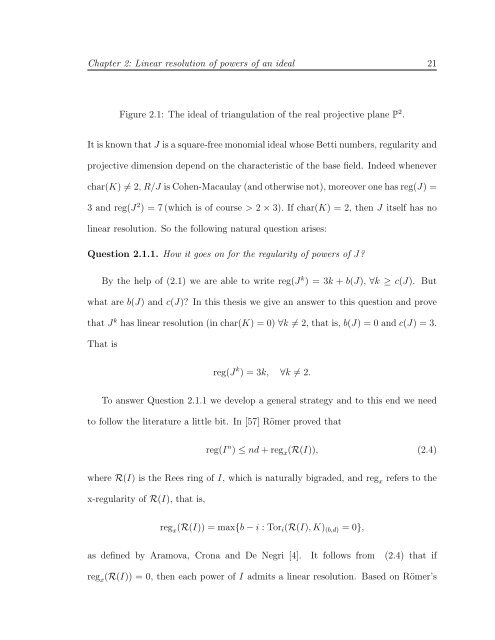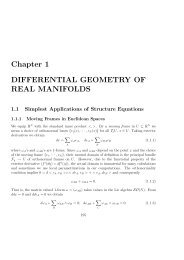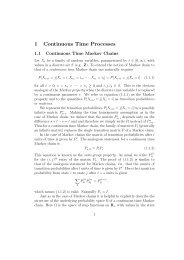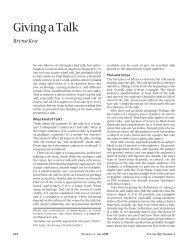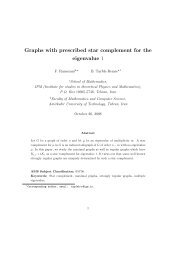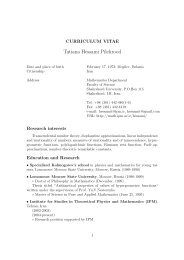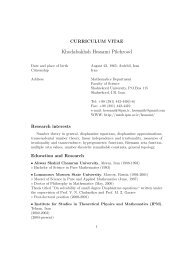Betti numbers of modules over Noetherian rings with ... - IPM
Betti numbers of modules over Noetherian rings with ... - IPM
Betti numbers of modules over Noetherian rings with ... - IPM
Create successful ePaper yourself
Turn your PDF publications into a flip-book with our unique Google optimized e-Paper software.
Chapter 2: Linear resolution <strong>of</strong> powers <strong>of</strong> an ideal 21<br />
Figure 2.1: The ideal <strong>of</strong> triangulation <strong>of</strong> the real projective plane P 2 .<br />
It is known that J is a square-free monomial ideal whose <strong>Betti</strong> <strong>numbers</strong>, regularity and<br />
projective dimension depend on the characteristic <strong>of</strong> the base field. Indeed whenever<br />
char(K) = 2, R/J is Cohen-Macaulay (and otherwise not), more<strong>over</strong> one has reg(J) =<br />
3 and reg(J 2 ) = 7 (which is <strong>of</strong> course > 2 × 3). If char(K) = 2, then J itself has no<br />
linear resolution. So the following natural question arises:<br />
Question 2.1.1. How it goes on for the regularity <strong>of</strong> powers <strong>of</strong> J?<br />
By the help <strong>of</strong> (2.1) we are able to write reg(J k ) = 3k + b(J), ∀k ≥ c(J). But<br />
what are b(J) and c(J)? In this thesis we give an answer to this question and prove<br />
that J k has linear resolution (in char(K) = 0) ∀k = 2, that is, b(J) = 0 and c(J) = 3.<br />
That is<br />
reg(J k ) = 3k, ∀k = 2.<br />
To answer Question 2.1.1 we develop a general strategy and to this end we need<br />
to follow the literature a little bit. In [57] Römer proved that<br />
reg(I n ) ≤ nd + reg x(R(I)), (2.4)<br />
where R(I) is the Rees ring <strong>of</strong> I, which is naturally bigraded, and reg x refers to the<br />
x-regularity <strong>of</strong> R(I), that is,<br />
reg x(R(I)) = max{b − i : Tori(R(I), K)(b,d) = 0},<br />
as defined by Aramova, Crona and De Negri [4]. It follows from (2.4) that if<br />
reg x(R(I)) = 0, then each power <strong>of</strong> I admits a linear resolution. Based on Römer’s


